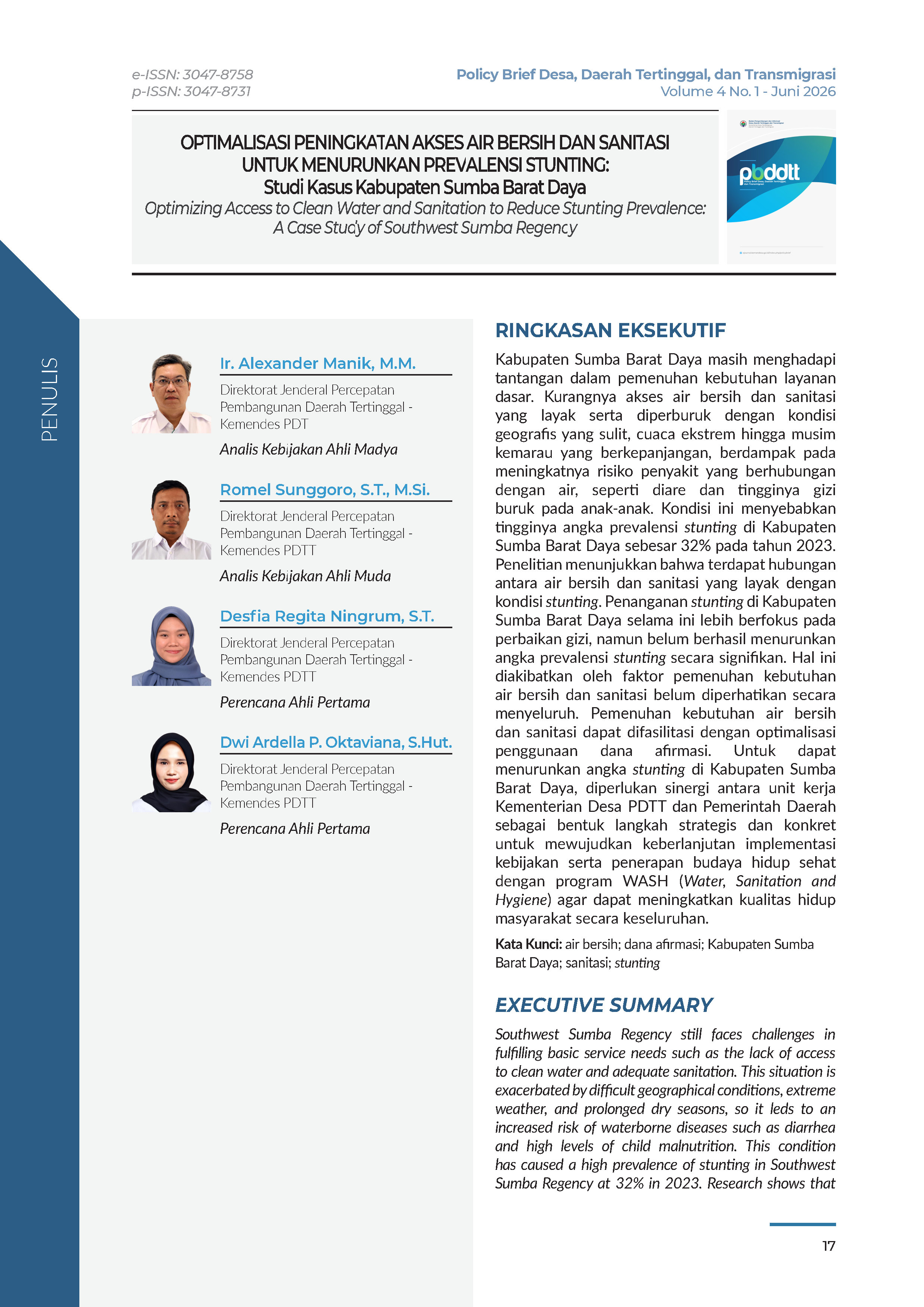Optimizing Access to Clean Water and Sanitation to Reduce Stunting Prevalence
A Case Study of Southwest Sumba Regency
Keywords:
affirmative funds, clean water, sanitation, Southwest Sumba Regency, stuntingAbstract
Southwest Sumba Regency still faces challenges in fulfilling basic service needs such as the lack of access to clean water and adequate sanitation. This situation is exacerbated by difficult geographical conditions, extreme weather, and prolonged dry seasons, so it leds to an increased risk of waterborne diseases such as diarrhea and high levels of child malnutrition. This condition has caused a high prevalence of stunting in Southwest Sumba Regency at 32% in 2023. Research shows that there is a correlation between clean water and adequate sanitation and stunting conditions. Stunting management in Southwest Sumba Regency has so far focused on improving nutrition but has not been successful in significantly reducing the prevalence of stunting. This is because the factor of fulfilling the needs for clean water and sanitation has not been fully considered. The fulfilment of clean water and sanitation needs can be facilitated by optimizing the use of affirmative funds. To reduce the prevalence of stunting in Southwest Sumba Regency, a synergy is needed between The Ministry of Villages PDTT and the Local Government as a strategic and concrete step to realize the sustainability of policy implementation and the application of a healthy lifestyle with the WASH (Water, Sanitation, and Hygiene) program in order to improve the overall quality of life of the community.
Downloads


